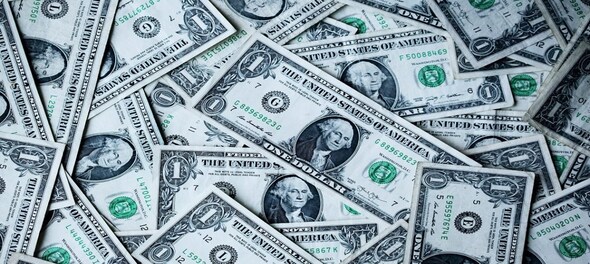
The US dollar staged its biggest rally in 10 months as traders questioned the scale of Federal Reserve rate cuts priced into markets and geopolitical tensions boosted demand for the haven currency.
The Bloomberg Dollar Spot Index rose 0.8% on Tuesday, its strongest advance since March 2023, as the dollar strengthened against every one of the world’s major currencies. The gauge closed at its highest level since December 13.
The dollar’s rise is defying widespread expectations that it would continue to drift lower this year on speculation that the Fed will start easing monetary policy as soon as March, reducing the interest-rate gap that once sent investors flocking to the US.
But the outlook is being clouded by concern that traders have overestimated how much policymakers will ease. At the same time, escalating conflict in the Red Sea shipping corridor and persistent weakness in China’s economy have heightened interest in the dollar as a temporary hideout from uncertainty.
“The market has been and remains too optimistic on Fed rate cuts,” said Paresh Upadhyaya, director of fixed income and currency strategy at Amundi Asset Management. “If you throw in any bouts of risk aversion triggered by geopolitical risk or political uncertainty, then that will help boost the USD via its safe haven status.”
Fed Governor Christopher Waller underscored the concerns about the central bank’s path on Tuesday, when he emphasized that policymakers should be methodical and careful with the pace of easing. His comments helped to push up Treasury yields, with those on benchmark 10-year notes rising as much as 14 basis points to a high of 4.08%.
The attacks in the Red Sea shipping lanes have raised fears of further disruption to global trade and supply chains that could fan inflation pressures. Houthi militants struck a second commercial ship in the span of a day, while Shell Plc paused the transit of oil tankers through the area.
At the same time, stimulus plans considered by Chinese officials are highlighting the difficulties that the world’s second-largest economy has faced since emerging from Covid lockdowns.
“I’m not surprised that some of that optimism has waned during the beginning of the new year,” said Amanda Sundstrom, a fixed income and foreign-exchange strategist at SEB AB in Stockholm. “There’s going to be some set-backs even if we still believe that we’re heading in the right direction.”
There are some signs that the dollar’s recent strength isn’t expected to fade soon, however. While options traders are cautious when it comes to further strength in the near-term, over a one-month horizon, risk reversals show the most bullish sentiment toward the dollar in a month, largely because of expected weakness in China’s currency.
On Tuesday, the euro fell to a one month-low of $1.0863 while the yen slumped to its weakest level in almost six weeks, at around 147 to the dollar. The Australian dollar and some Scandinavian currencies — typically barometers of global risk sentiment — fell over 1%.
Supporting the bullish dollar view is a growing number of investors and analysts who say swap markets are too aggressively priced for rate cuts from major central banks this year.
Traders have consistently overestimated how hawkish the Fed would be since the end of the pandemic. And European Central Bank Governing Council member Robert Holzmann said in an interview on Monday that threats stemming from lingering inflation and geopolitical risks will prevent the European Central Bank from lowering interest rates this year.
“The tone of central bankers this morning is one of hesitancy — especially what’s coming from the ECB” as rising freight rates reignite fears of supply-chain disruptions amid woes in both Red Sea and Panama Canal, said Thierry Wizman, director of global currencies and an interest-rate strategist at Macquarie Futures. “That’s why they are sounding less dovish.”
Check out our in-depth Market Coverage, Business News & get real-time Stock Market Updates on CNBC-TV18. Also, Watch our channels CNBC-TV18, CNBC Awaaz and CNBC Bajar Live on-the-go!


2024 Lok Sabha Elections | What does a low voter turnout indicate for NDA and I.N.D.I.A Bloc
Apr 29, 2024 5:48 AM
'Borrowed' leaders: Congress hits out at AAP for not fielding their own candidates in Punjab
Apr 28, 2024 9:53 PM
EC asks AAP to modify election campaign song and Kejriwal's party is miffed
Apr 28, 2024 9:25 PM

